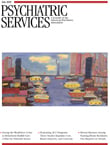Annual Government Spending on Substance Abuse and Addiction Nears a Half Trillion Dollars
Substance abuse and addiction cost federal, state, and local governments in the United States at least $468 billion in 2005, according to a report released by the National Center on Addiction and Substance Abuse (CASA) at Columbia University. CASA researchers found that of $374 billion in federal and state spending, 95.6% ($357 billion) went to "shovel up the consequences and human wreckage" of substance abuse and addiction, whereas only 1.9% went to prevention and treatment, .4% to research, 1.4% to taxation and regulation, and .7% to interdiction.
"Under any circumstances, spending more than 95 percent of taxpayer dollars on the … consequences of tobacco, alcohol, and illegal and prescription drug abuse and addiction and only two percent to relieve individuals and taxpayers of these burdens is a reckless misallocation of public funds. In these economic times, such upside-down-cake public policy is unconscionable," said Joseph A. Califano Jr., CASA's founder and chair, in a statement that accompanied the report's release.
The 287-page report, Shoveling Up II: The Impact of Substance Abuse on Federal, State and Local Budgets, is based on data collected and analyzed over three years. CASA researchers' intent was to undertake the most comprehensive measurement to date of the costs of substance abuse and addiction to all levels of government. They looked beyond the usual categories in which such spending is estimated—prevention, treatment, research, taxation and regulation, and interdiction—to the much larger costs buried in government budgets, such as spending on health care; the criminal, juvenile, and family court systems; incarceration; child welfare; domestic violence and child abuse; homelessness; and mental illness and developmental disabilities.
Using the most conservative assumptions, the researchers concluded that the federal government spent $238 billion, states spent $136 billion, and local governments spent $94 billion in 2005—the most recent year for which data were available over the course of the study. The largest proportion of federal and state government spending to address abuse and addiction went to health care (58%). (Health care accounted for 74% of the total for the federal government considered separately.) The second largest proportion (13%) of federal and state spending was on justice systems, including incarceration, probation, parole, criminal, juvenile and family courts (32.5% of the state burden).
Abuse and addiction-related spending by federal and state governments in 2005 accounted for 11.2% of all government spending ($3.3 trillion), or more than one of every ten dollars, according to the report. For every dollar that federal and state governments spent on prevention and treatment, they spent $59.83 on public programs to address the damage, despite a growing body of evidence that addiction is a preventable, treatable, and manageable disease and that some well-studied interventions result in substantial cost savings. Among the states, prevention and treatment accounted for $2.38 of every $100 spent on abuse and addiction. Connecticut spent the most ($10.39), and New Hampshirespent the least ($.22). Another finding noted in the report is that for every dollar that federal and state governments collected in alcohol and tobacco taxes and liquor store revenues, they spent $8.95 "shoveling up."
The final chapter of the report, "Moving From Spending to Investing," attributes the runaway spending to "our national blindness about the nature of addictive disease" and recommends actions by federal, state, and local governments in four areas: prevention and early intervention,treatment and disease management, tax and regulatory policies, and expanded research. A 100-page appendix details the survey methods and presents tables of spending data for each state. The report is available for free download from the CASA Web site at www.casacolumbia.org .



